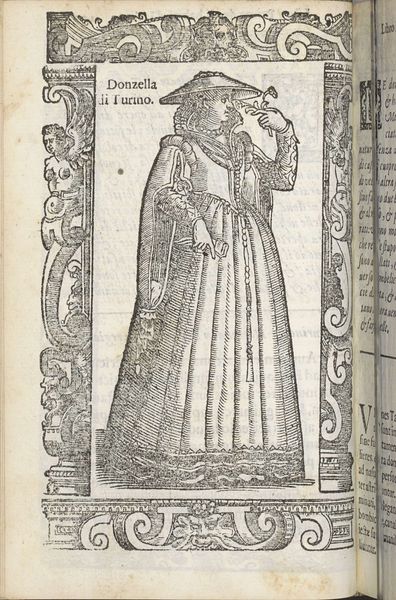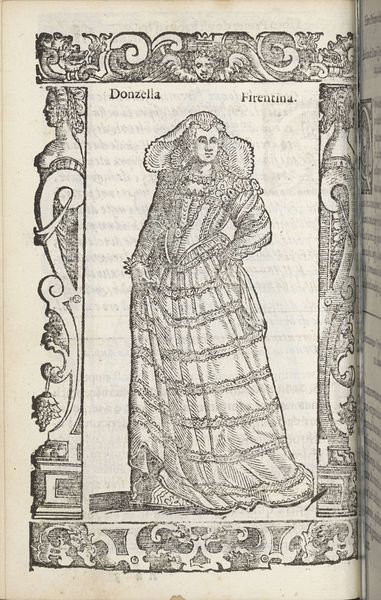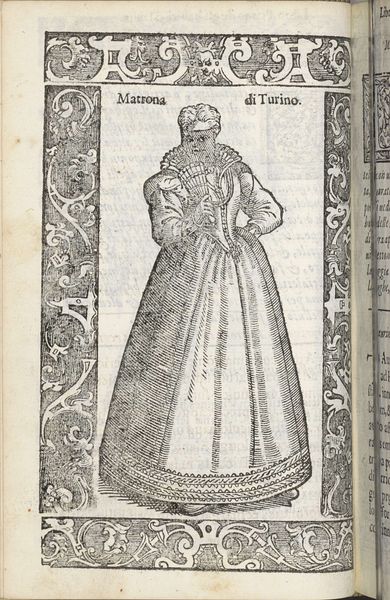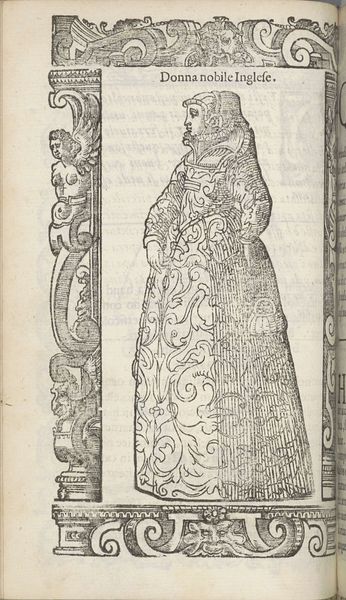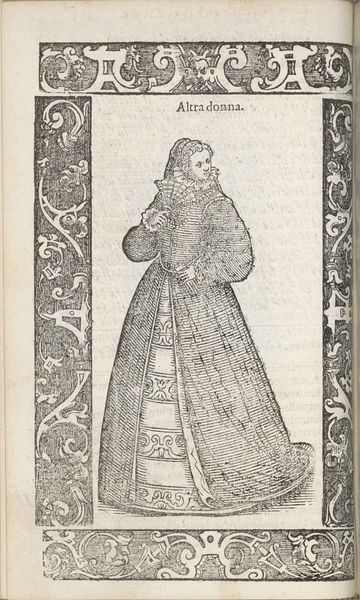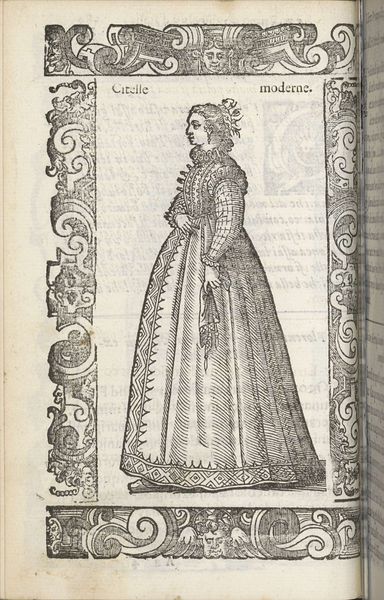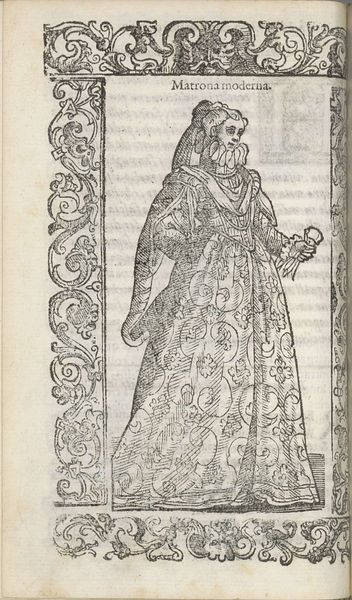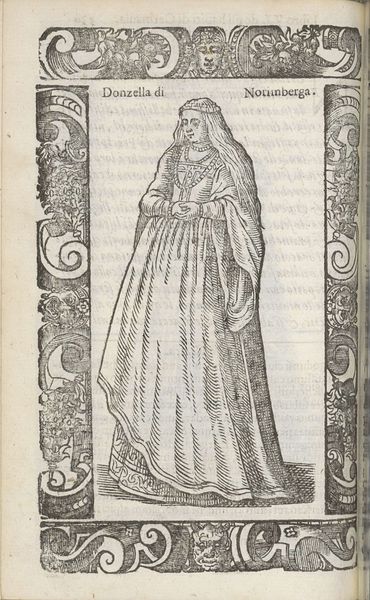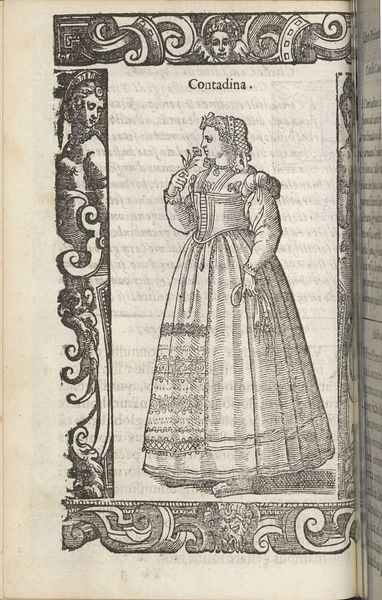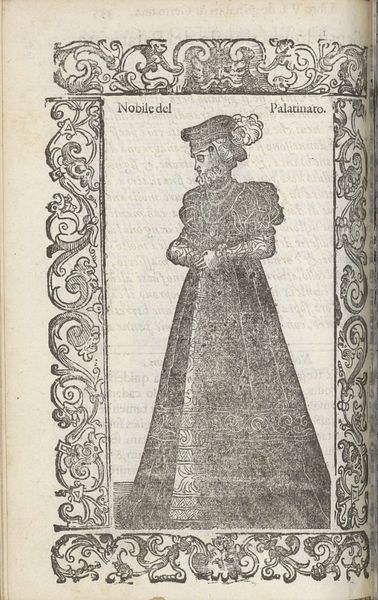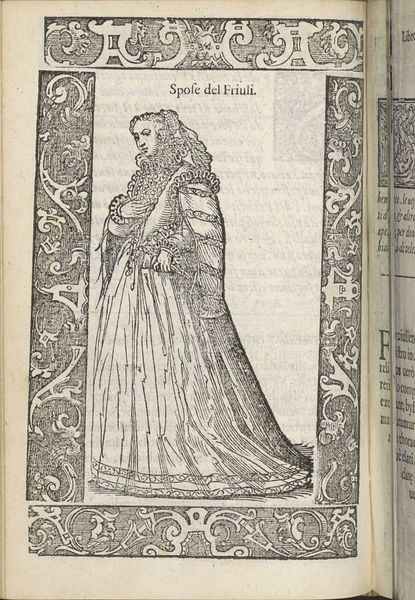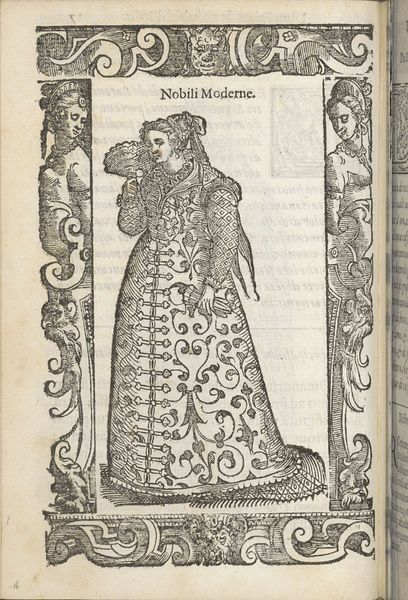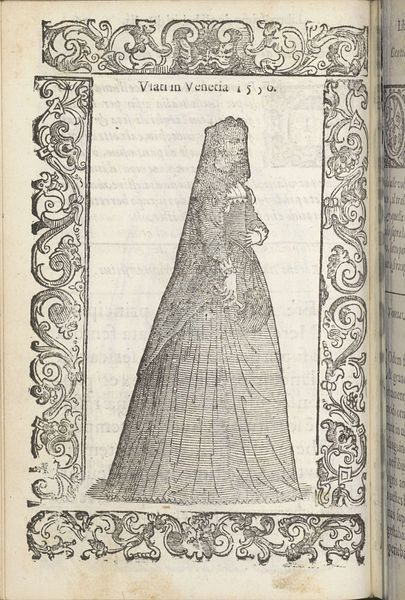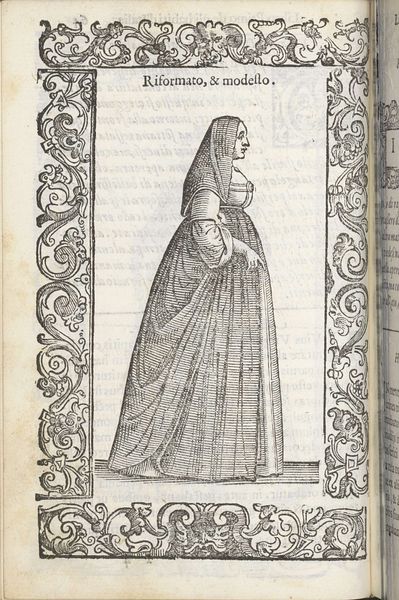
print, engraving
# print
#
figuration
#
11_renaissance
#
history-painting
#
italian-renaissance
#
dress
#
engraving
Dimensions: height 167 mm, width 125 mm
Copyright: Rijks Museum: Open Domain
Editor: So, this engraving, "Pas getrouwde dame uit Florence" from 1598, by Christoph Krieger, features a full-length portrait of a woman in elaborate clothing. It's fascinating, like a high fashion spread of the 16th century. What's your take on its purpose within the broader context of art history? Curator: This print isn't just a fashion statement, though it certainly serves as one. Think about the power dynamics inherent in portraiture at the time. It functions as a representation of social status and, importantly, of cultural identity. "Nobile Maritata," it says; this isn't just any woman, but a noble married woman, defining her specifically in terms of marriage. Consider the rise of printmaking during the Renaissance; how does that medium impact our understanding of the woman represented and her place in society? Editor: That’s a great point; the print makes it more accessible. It is not a one-of-a-kind painting commissioned only by her family, but an image shared with others. It's also very interesting that the status marker "married" is pointed out. Do you think this artwork was only intended to display her identity, or to convey specific socio-political ideas or concepts about the role of married women in Florence at that time? Curator: Undoubtedly. The elaborate details of her dress— the ruff, the brocade— signal wealth and lineage. But I wonder what choices the artist made in framing her so rigidly. What power do engravings have when representing specific types of citizens to a broader public, or within a specific region or city such as Florence? How does this print perform an act of "showing" and potentially prescribing the role of married, noble women? Editor: So it is more about what the artwork DOES than about the lady, who's depicted. This gives me so much to consider! It is incredible to discover the amount of complexity art can hold about status, socio-cultural roles, and even printmaking's impact on representing women. Curator: Precisely. Reflecting on it helps us decipher the intricate layers of meaning within these seemingly straightforward portraits.
Comments
No comments
Be the first to comment and join the conversation on the ultimate creative platform.
